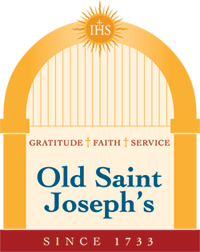for September 15
Memorial of Our Lady of Sorrows
The lectionary is the book that contains the bible readings that are used at Mass each day. The selection of readings is very important for the Church because the readings set the spiritual atmosphere for the day. A major advance in ecumenical relations was achieved in the 1970’s when all the mainline Protestant Churches joined with the Roman Catholic Church in setting up a common lectionary. That means that on every Sunday Protestants and Catholics join together in reading and praying over the same biblical readings.
Before the liturgical reforms of Vatican II, the lectionary was a mess. The daily readings were rather restricted, and the Sunday readings were similarly restricted, so that only a very small part of the bible ever made it into the readings at Mass. That is one reason why Catholics were so ignorant of the bible. Thankfully, that has changed.
Today is an interesting illustration of a possible wrinkle that may still plague the daily lectionary. Over the last few weeks, we have been reading through the First Letter to the Corinthians. The daily gospels have been taken from the Gospel of Luke. By using sequential readings that way, the lectionary encourages us to follow along through the books of the bible so that over time we can get a sweeping view of virtually the entire bible.
But today’s choice of readings in the Lectionary is somewhat jarring. We continue our progress through the Corinthinans correspondence, but the gospel is taken out of sequence. Because of the feast of Our Lady of Sorrows, the gospel chosen is the crucifixion scene from John’s gospel. So we have continuity in the first reading and a special interruption in the gospel selection.
This might be too much “inside the beltway talk” for you non-liturgists out there. But if you attend daily Mass you should pay attention to the sequence of readings if they are, as intended, setting the spiritual atmosphere for your day. A day like today does present a special challenge for the homilist, however. Do you preach on the first reading, to preserve the continuity with the daily readings? Or do you preach on the gospel which relates to today’s special feast day?
A word about the gospel that relates to today’s feast, Our Lady of Sorrows.
If you come regularly to Mass at Old St Joseph, you have spent a good deal of time gazing upon the large portrait of this gospel scene that hangs over our altar. I’m told it’s not a valuable painting, but for most of us it does evoke a spiritual response nevertheless, given its special place in the life of our parish.
John the evangelist tells us who is at the foot of the cross. Following the other three gospels, he identifies Mary Magdelene one of the women. But only John’s gospel mentions “the beloved disciple,” or as our translation has it, “the disciple whom Jesus loved.” Notice that this disciple is never identified by name. That’s important. The popular tradition that associates this disciple with John, the son of Zebedee, really does violence to the intention of the evangelist. The disciple is deliberately not named because he plays a symbolic role in the gospel and is not to be associated with any historical personage. The beloved disciple is the believing disciple, the one who gives testimony and who authenticates our belief. “His testimony is true,” is the gospel refrain, describing the beloved disciple.
The mother of Jesus plays a somewhat similar role in the fourth gospel. She is never given a name. If we only had the fourth gospel to go by, we would never know that Mary was the name of Jesus’ mother. The mother of Jesus primarily appears only twice in the fourth gospel. At the beginning of Jesus’ ministry, at the marriage feast at Cana, and here at the foot of the cross. Significantly, only John’s gospel places Jesus’ mother at the foot of the cross. Her symbolic importance in this scene is that she represents the Church, the community of believers.
In this gospel scene, the narrative depicts the mother being entrusted to the care of the son, and the son being entrusted to the mother. In theological terms, the disciple who testifies to the truth now must foster the church’s life, while it is the community of God’s people that must protect and proclaim the truth of the faith. The two are united as Jesus from the cross is about to breathe out his spirit upon them.
The next time you become impatient with the Church, or the next time you feel your faith has weakened, place yourself in this scene at the foot of the cross. The faith will straighten us when our bonds to the community have weakened. And the community will support us when our own faith is lagging.
As the feast reminds us today, this moment of bonding transpires in the midst of great sorrow, but in John’s gospel always draws us beyond the sorrow to the glory of God that shines through with the resurrection and the bestowal of eternal life.
—Walter F. Modrys SJ
Today’s readings can be found on the US Conference of Catholic Bishops’ website.
Mass Times
Sunday at 7:30 AM, 9:30AM, 11:30 AM
Tues., Wed., & Thurs. at 12:05 PM
